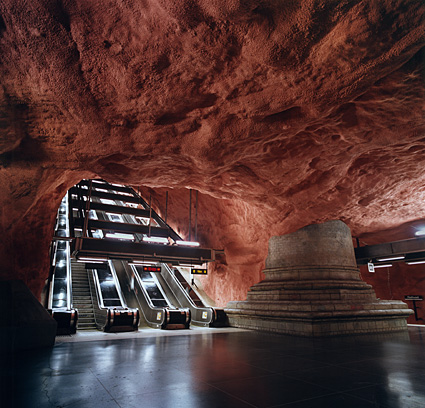Equipment
Architectural photography is conducted with medium- and large-format film cameras with 3 to 15 times the exposure area of regular 35mm film or digital sensors. Big image capture enables ultra-wide photography with minimal distortion, and allows for variable sizing (rectangular, square or panoramic) without loss of quality. Large-format bellows cameras provide for perspective control such as correcting for slanting lines when the camera is aimed upwards to photograph a tall building or lofty interior. Large-format transparencies of 4x5 inches or longer allow for enlargements to wall or mural size.
Smaller 35mm format is used for architectural photography when portability or safety issues rule out hefty medium- or large format equipment that normally requires a tripod and attendant baggage. Premium Leica optics enhanced for low-light conditions or perspective control can often enable premium image quality from 35mm film (and from digital capture for normal to slightly-wide views) when the camera must be hand-held.
Traditional Panoramic Photography
The remarkable expanse of the East Wing of the National Gallery of Art in Washington DC is illustrated through a 120° view, more than twice the span of eyesight. The scene was photographed from a precipitous perch without tripod using the widest available rectilinear optic, which for panoramic capture can be used only on film cameras.



